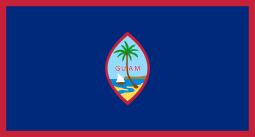George Salisbury (governor)
George Robert Salisbury was a United States Navy Commodore who served as the 15th Naval Governor of Guam. Though he originally served as an Engineering Duty Officer, he eventually stopped being a Restricted Line Officer, and retired from the Navy as a Commodore. As governor, he rolled back a number of educational reforms and encouraged a new ranch system. He also took drastic measures to control the leprosy epidemic on the island, removing the infected to Philippines. He was briefly called into service during World War I before retiring.
George Robert Salisbury | |
|---|---|
| 15th Naval Governor of Guam | |
| In office January 21, 1911 – January 30, 1912 | |
| Preceded by | Frank Freyer |
| Succeeded by | Robert Coontz |
| Personal details | |
| Nationality | American |
| Military service | |
| Allegiance | |
| Branch/service | |
| Rank | |
Life and naval career
Salisbury married once to Adele Trowbridge, whom he divorced on December 6, 1913 in an uncontested court decision with no alimony.[1] Salisbury was appointed to the United States Naval Academy from Missouri in 1874, graduating on June 10, 1879.[2] He served as an Engineering Duty Officer from 1881 to 1892, during this time, he served as a naval engineer aboard the USS Chicago in 1889.[3] He participated in the Spanish–American War aboard a battleship.[4] On March 3, 1899, his ranked was changed to lieutenant.[2] From 1899 to 1902, he served aboard the USS Massachusetts.[2] He achieved the rank of lieutenant commander in 1902.[5]
He attempted to retire, but was recalled up to service in the Reserve Naval Fleet during World War I.[6] He was placed in charge of overseeing minesweeper production in Buffalo, New York.[7] He ultimately retired with the title of Commodore.[4]
Governorship
Salisbury was Governor of Guam from January 21, 1911 to January 30, 1912.[8] He rolled back some education reforms of Governor Edward John Dorn, and once again allowed residents who lived more than two hours from a public school to forgo attendance if they desired.[9] He also changed the age of compulsory schooling to those between the ages of six and twelve.[10] Salisbury soon found himself, like the governors before him, unable to control the spread of leprosy through Guam. Taking drastic measures, he began removing the infected from the island, quarantining them in the Philippines.[11] He encouraged the native Chamorro population to increasingly live on ranches, raise livestock, and farm.[10]
References
- "Naval Officer Divorced: Decree Granted Wife of Commodore Geo. R. Salisbury, Retired". Detroit Free Press. Detroit, Michigan. Gannett Company. 6 December 1913. p. 11. Retrieved 21 November 2010.
- Hamersly, Lewis Randolph (1902). The Records of Living Officers of the U.S. Navy and Marine Corps. L.R. Hamersly. p. 285. Retrieved 21 November 2010.
- "Rear Admiral Richmond P. Hobson, USN (Construction Corps, Retired), (1870-1937)". Online Library of Selected Images. Washington, D.C.: Naval History & Heritage Command. 16 May 2006. Archived from the original on 21 November 2010. Retrieved 21 November 2010.
- Salisbury, Elon Galusha (1921). The Salisburian: Historical, Biographical, and Genealogical Records of the House of Salisbury, Originally of Massachusetts, later of Phelps, New York. 1. New England Genealogical Society. p. 36. Retrieved 21 November 2010.
- "Nominated by the President" (PDF). The New York Times. New York City. The New York Times Company. 20 June 1902. Retrieved 21 November 2010.
- "Retired Naval Officers Called to War Service". Official U.S. Bulletin. Washington, D.C.: United States Government Printing Office. 1: 362–367. 1917. Retrieved 21 November 2010.
- The Northern Barrage: Taking up the Mines. Washington, D.C.: Naval History & Heritage Command. 1920. p. 42. Retrieved 21 November 2010.
- "Naval Era Governors of Guam". Guampedia. Guam: University of Guam. 10 August 2010. Archived from the original on 29 October 2010. Retrieved 29 October 2010.
- Campbell, Bruce (13 August 2010). "Private Schooling During the US Naval Era". Guampedia. Guam: University of Guam. Archived from the original on 21 November 2010. Retrieved 21 November 2010.
- Underwood, Robert (13 August 2010). "Education during the US Naval Era". Guampedia. Guam: University of Guam. Archived from the original on 21 November 2010. Retrieved 21 November 2010.
- Murphy, Connor; Tanya M. Champaco Mendiola (7 September 2010). "Leprosy – Insular Patrol". Guampedia. Guam: University of Guam. Archived from the original on 21 November 2010. Retrieved 21 November 2010.
